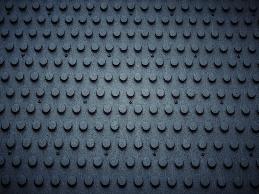From the desk of Tatum Storey, MSW, Consultant - Motor Team
Many individuals from various work environments contact the Job Accommodation Network (JAN) and report feeling at a loss when trying to manage pain and fatigue on the job, especially when the job involves standing or walking for prolonged periods. For example, we hear from individuals who experience pain and fatigue associated with arthritis, chronic fatigue syndrome, amputations, back impairments, chronic pain, multiple sclerosis, and back pain.
At JAN we inform individuals and employers of accommodation options for their consideration. However, there is no comprehensive list of accommodations, which oftentimes fosters creativity in determining an effective solution. We have found that anti-fatigue matting can be a useful and effective form of accommodation when the job requires standing. Anti-fatigue matting is designed to reduce pain and fatigue from standing for prolonged periods of time. It functions by absorbing density or pressure from standing and, in turn, allows a user to feel less direct force from a hard surface. Anti-fatigue matting also works by cushioning feet to reduce fatigue and soreness. It comes in various materials and can be designed to fit a large variety of floor plans. Anti- fatigue matting insoles are another common option for individuals who walk for a lot of their workday.
Below you will find two scenarios that outline possible use of anti-fatigue matting as accommodation solutions:
Scenario 1: An individual who has arthritis feels pain and discomfort while working long hours on her feet. This individual works as a hairdresser and must stand on her feet behind her chair for 8 hours a day. Due to the increased soreness and pressure this individual feels in her legs and back due to her arthritis, the employee requests an accommodation. During the interactive process the employer and individual determine that an anti-fatigue mat may absorb some of the pressure that the employee is experiencing. Because this individual does not have to walk frequently, the individual and employer determine that an anti-fatigue mat paired with a rolling stool may offer this individual support in reducing discomfort on the job.
Scenario 2: An individual who has chronic fatigue syndrome and works in an industrial setting requests an accommodation after experiencing decreased stamina throughout their shift. This individual is required to work throughout a factory and is typically given their work assignment on a short-notice basis. Due to the lack of notice and various workstations throughout the factory, the employer and employee determine that wearable anti-fatigue matting may be the most effective solution to reduce fatigue. The employer and individual work together in determining the best anti-fatigue insoles for the employee.
Through our research, we have found that effective accommodations often enable employees to meet expectations and goals. Frequently, taking the small step of initiating an accommodation process can make a big difference in the quality and morale of the individual in need of the accommodation. If you are an employee experiencing pain or fatigue in relation to prolonged standing, you might consider exploring anti-fatigue matting.
For more information on anti-fatigue matting, visit JAN’s Anti-Fatigue Matting List of Products and Vendors and JAN’s Wearable Anti-Fatigue Matting List of Products and Vendors.


